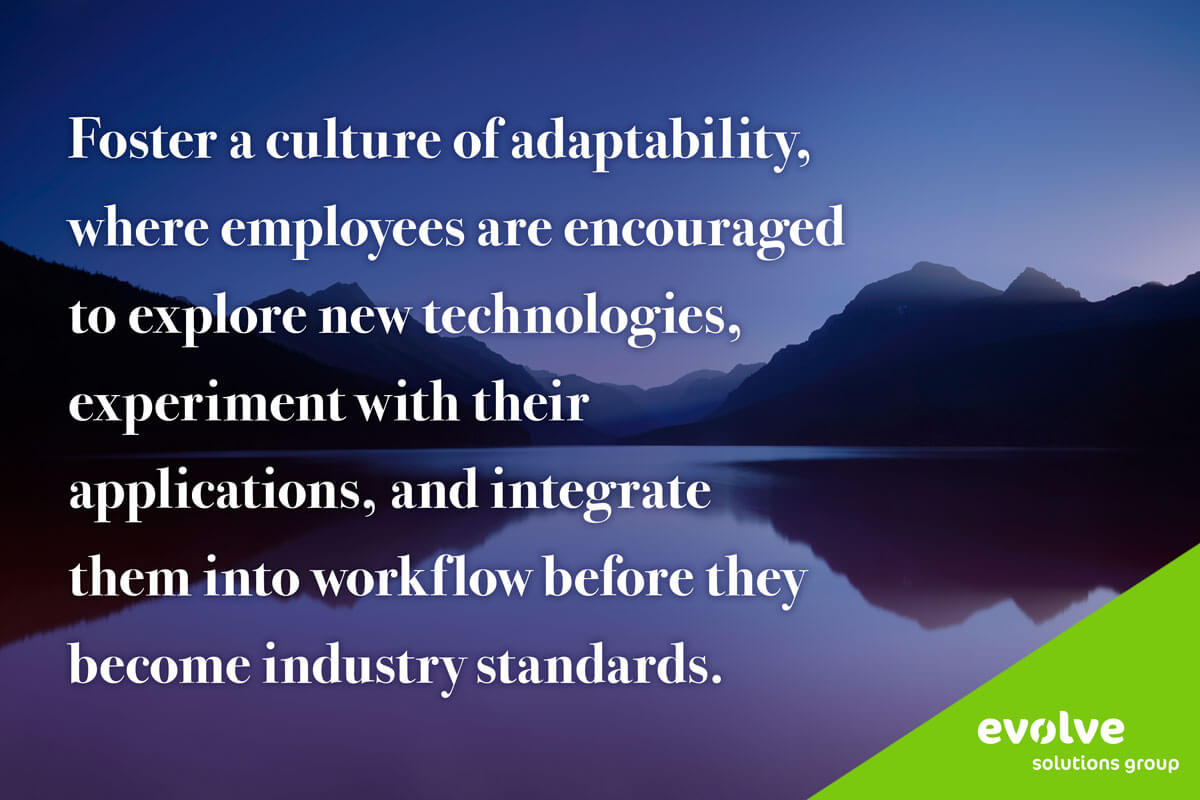 Generative AI has gone from a novelty to an essential tool in today’s L&D world. In just a few years, it has transformed how content is created, knowledge is shared, and training is delivered. The rapid pace of change isn’t slowing down—and this is just the beginning. As emerging technologies continue to evolve, the real challenge isn’t just keeping up with one breakthrough but preparing for a future where disruption is constant.
Generative AI has gone from a novelty to an essential tool in today’s L&D world. In just a few years, it has transformed how content is created, knowledge is shared, and training is delivered. The rapid pace of change isn’t slowing down—and this is just the beginning. As emerging technologies continue to evolve, the real challenge isn’t just keeping up with one breakthrough but preparing for a future where disruption is constant.
One of the biggest takeaways from this shift for L&D professionals is that learning can’t be static. Generative AI has already changed workflows across industries, making it easier to generate text, images, video, and interactive experiences at scale. As AI tools become more integrated into daily work, employees need new skills to effectively guide, refine, and oversee AI-generated content. The ability to critically assess AI outputs, provide creative direction, and ensure quality control is now just as important as traditional technical skills. Companies like Amazon and Google have recognized this and are investing heavily in reskilling programs to ensure their workforce can adapt—not by replacing human roles, but by empowering employees to work alongside AI as strategic collaborators.
For individuals, this means embracing continuous learning as a career-long necessity. A degree or certification is no longer enough—staying relevant means staying adaptable. On the flipside to this, organizations have a responsibility to their employees to make AI literacy and emerging tech awareness a standard part of professional development, ensuring employees at all levels understand how to leverage these tools effectively, rather than be displaced by them. Successful organizations are taking a proactive approach, ensuring employees understand not just how AI works, but how it fits into their roles. This includes transparency about AI’s role in the business, structured training programs, and hands-on experience with AI-driven tools. PwC, for example, introduced AI literacy training across its workforce, helping employees see AI as a tool for growth rather than a threat.
The rapid evolution of generative AI is just one example of how emerging technologies can reshape industries almost overnight. Augmented reality (AR), virtual reality (VR), and innovations we haven’t yet anticipated will continue to disrupt traditional workflows, forcing businesses to adapt. Organizations that prepare for these shifts before they happen will have a significant advantage. This means fostering a culture of adaptability, where employees are encouraged to explore new technologies, experiment with their applications, and integrate them into workflows before they become industry standards. It also requires leaders to stay ahead of trends, be timely in drafting policy and investing in training and infrastructure, that allow for quick pivots when disruptive technologies gain traction. Companies that build flexibility into their operations—whether through upskilling programs, cross-functional teams, or agile decision-making—will be better positioned to respond to change, rather than scrambling to catch up when the next wave of innovation hits.
Fostering a culture of experimentation and learning is essential to a workforce that nimbly pivots with disruption and incorporates new technologies. Encouraging employees to explore AI, test its capabilities, and integrate it into their workflows builds confidence and innovation. Google’s AI-first approach has demonstrated that when teams are given the freedom to experiment with AI, they discover unexpected ways to improve efficiency and creativity. Organizations that create space for employees to learn and test emerging tech—not just AI, but future technologies as well—will be more resilient in the face of change.
At the same time, businesses must keep an eye on the broader regulatory landscape. AI governance and data privacy regulations are evolving quickly. The European Union AI Act, the U.S. National AI Strategy, and recent U.S. regulation changes to reduce barriers to AI research, are just the beginning of a global shift toward accountability in AI adoption. Organizations that align with these policies early will not only avoid compliance risks but also build trust with employees and customers.
AI isn’t the end of the disruption—it’s the beginning. The organizations that invest in continuous learning, AI-human collaboration, and a culture of innovation will be the ones that stay ahead in an ever-shifting landscape of emerging technologies.
